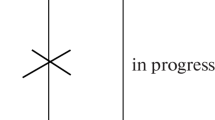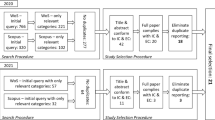Abstract
The authors offer a catalogue of problems experienced by developers, using various object modelling techniques brought into prominence by the widespread adoption of UML standard notations. The catalogue is revised to reflect changes made between UML versions 1.1 and 1.3, in which a number of semantic inconsistencies in the notation were fixed. Notwithstanding this, developers still seem to create inordinate problems for themselves by pursuing unproductive development strategies that are apparently fostered by UML. This article shows how the biggest problem by far is cognitive misdirection, or the apparent ease with which the rush to build UML models may distract the developer from important perspectives on a system. This problem is more serious than the outstanding inconsistencies and ambiguities which still exist in UML 1.3. A number ofinadequacies are also highlighted, where UML somehow still fails to express what we believe are important semantic issues. While UML itself is mostly neutral with respect to good or bad designs, the consequences of allowing UML to drive the development process include: inadequate object conceptualisation, poor control structures and poorly-coupled subsystems.
Access this chapter
Tax calculation will be finalised at checkout
Purchases are for personal use only
Preview
Unable to display preview. Download preview PDF.
Similar content being viewed by others
References
K Beck and W Cunningham (1989), “A laboratory for teaching object-oriented thinking“, Proc. 4th ACM Conf. Object-Oriented Prog. Sys., Lang, and Appl., pub. Sigplan Notices, 24(10), 1–6.
G Booch, J Rumbaugh and I Jacobson (1999), The Unified Modeling Language User Guide, Addison Wesley Longman.
G Booch (1994), Object-Oriented Analysis and Design with Applications, 2nd edn., Benjamin-Cummings.
P Coad and E Yourdon (1991), Object Oriented Analysis, Yourdon Press.
P Coad and E Yourdon (1991), Object Oriented Design, Yourdon Press.
A Cockburn (1996), Basic Use Case Template, TR.96.03a, rev. 1998, Humans and Technology; also pub. http://members.aol.com/acockburn/papers/uctempla.htm
A Cockburn (1997a), “Goals and use cases“, J. Obj.-Oriented Prog., 10(5), 35–40.
A Cockburn (1997b), “Using goal-based use cases“, J. Obj.-Oriented Prog., 10(7), 56–62.
D Firesmith, B Henderson-Sellers and I Graham (1997), OPEN Modelling Language (OML) Reference Manual, March, SIGS Books.
M Fowler, A Cockburn, I Jacobson, B Anderson and I Graham (1998), “Question time! About use cases“, Proc. 13th ACM Conf. Obj.-Oriented Prog. Sys., Lang, and Appl, pub. ACM Sigplan Notices, 33(10), 226–229.
E Gamma, R Helm, R Johnson and J Vlissides (1995), Design Patterns: Elements of Reusable Object-Oriented Software, Addison-Wesley.
E A Gibson (1990), “Objects born and bred“, BYTE magazine, 15(10), 255–264.
I Graham (1995), Migrating to Object Technology, Addison-Wesley.
I Graham (1997), “Some problems with use cases. and how to avoid them“, Proc. 3rd Int. Conf Object-Oriented Info. Sys., eds D Patel, Y Sun and S Patel, (London: Springer Verlag), 18–27
B Henderson-Sellers, A J H Simons and H Younessi (1998), The OPEN Toolbox of Techniques, Addison-Wesley.
K S Y Hung, A J H Simons and A Rose (1998), “Can you have it all? Managing the time and budget against quality issue in a dynamic business object architecture development“, Proc. 6th Conf Software Quality Management (Amsterdam: MEP), 21–34.
I Jacobson, M Christerson, P Jonsson and G Üvergaard (1992), Object-Oriented Software Engineering: a Use-Case Driven Approach, Addison-Wesley.
I Jacobson, M Griss and P Jonsson (1997), Software Reuse: Architecture, Process and Organisation for Business Success, Addison-Wesley and ACM Press, Reading MA, USA, 497pp.
J D McGregor (1997), Testing Object-Oriented Components, ECOOP’ 97 Tutorial 2 (Jyväskylä, AITO/ACM).
Rational Software (1997), UML 1.1 Reference Manual, September, http://www.rational.com/uml/.
K Rubin and A Goldberg (1992), “Object-behaviour analysis“, Comm. ACM, 35(9).
J Rumbaugh, M Blaha, W Premerlani, F Eddy and W Lorensen (1991), Object-Oriented Modeling and Design, Prentice-Hall.
A J H Simons (1998), Object Discovery-a Process for Developing Medium-Sized Applications, ECOOP V8 Tutorial 14, (Brussels, AITO/ACM), 90pp.
A J H Simons and I Graham (1998), “37 things that don’t work in object-oriented modelling with UML“, Proc. 2nd ECOOP Workshop on Precise Behavioural Semantics, eds. H Kilov and B Rumpe, Technical Report TUM-I9813 (TU Munich, Institut für Informatik), 209–232.
A J H Simons and I Graham (1998), “37 things that don’t work in object-oriented modelling with UML“, British Computer Society Object-Oriented Programming Systems Newsletter, 35, eds. R Mitchell and S Kent (BCS: Autumn, 1998), http://www.oopsnl.ukc.ac.uk/Issue35Autumn1998/contents.html.
A J H Simons, M Snoeck and K S Y Hung (1998), “Design patterns as litmus paper to test the strength of object-oriented methods“, Proc. 5th. Int. Conf. Object-Oriented Info. Sys., eds. C Rolland and G Grosz (Paris: Springer Verlag), 129–147.
K Waldén and J-M Nerson (1995), Seamless Object-Oriented Architecture, Prentice Hall.
R Wirfs-Brock and L Wiener (1989), “Responsibility-driven design: a responsibility-driven approach“, Proc. 4th ACM Conf. Object-Oriented Prog. Sys., Lang. and Appl., pub. Sigplan Notices, 24(10), 71–76.
R Wirfs-Brock, B Wilkerson and L Wiener (1990), Designing Object-Oriented Software, Prentice Hall.
Author information
Authors and Affiliations
Editor information
Editors and Affiliations
Rights and permissions
Copyright information
© 1999 Springer Science+Business Media New York
About this chapter
Cite this chapter
Simons, A.J.H., Graham, I. (1999). 30 Things that Go Wrong in Object Modelling with UML 1.3. In: Kilov, H., Rumpe, B., Simmonds, I. (eds) Behavioral Specifications of Businesses and Systems. The Springer International Series in Engineering and Computer Science, vol 523. Springer, Boston, MA. https://doi.org/10.1007/978-1-4615-5229-1_17
Download citation
DOI: https://doi.org/10.1007/978-1-4615-5229-1_17
Publisher Name: Springer, Boston, MA
Print ISBN: 978-1-4613-7383-4
Online ISBN: 978-1-4615-5229-1
eBook Packages: Springer Book Archive




